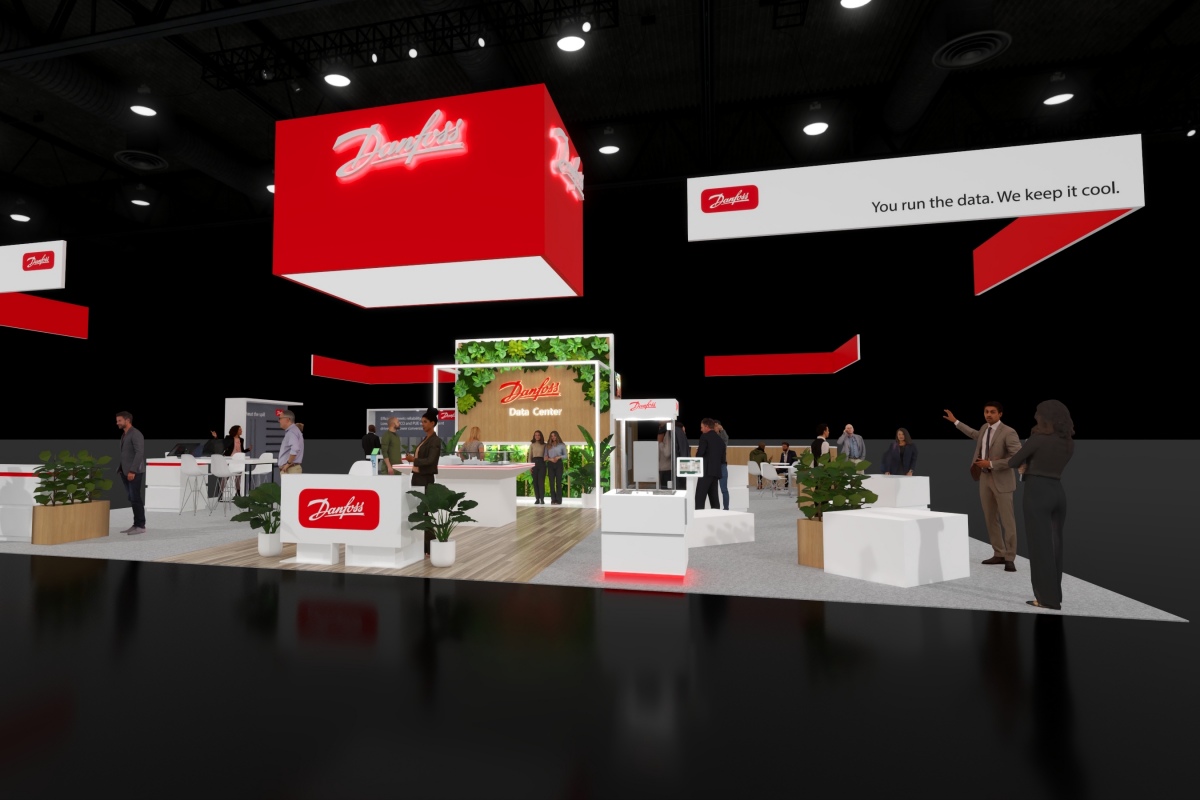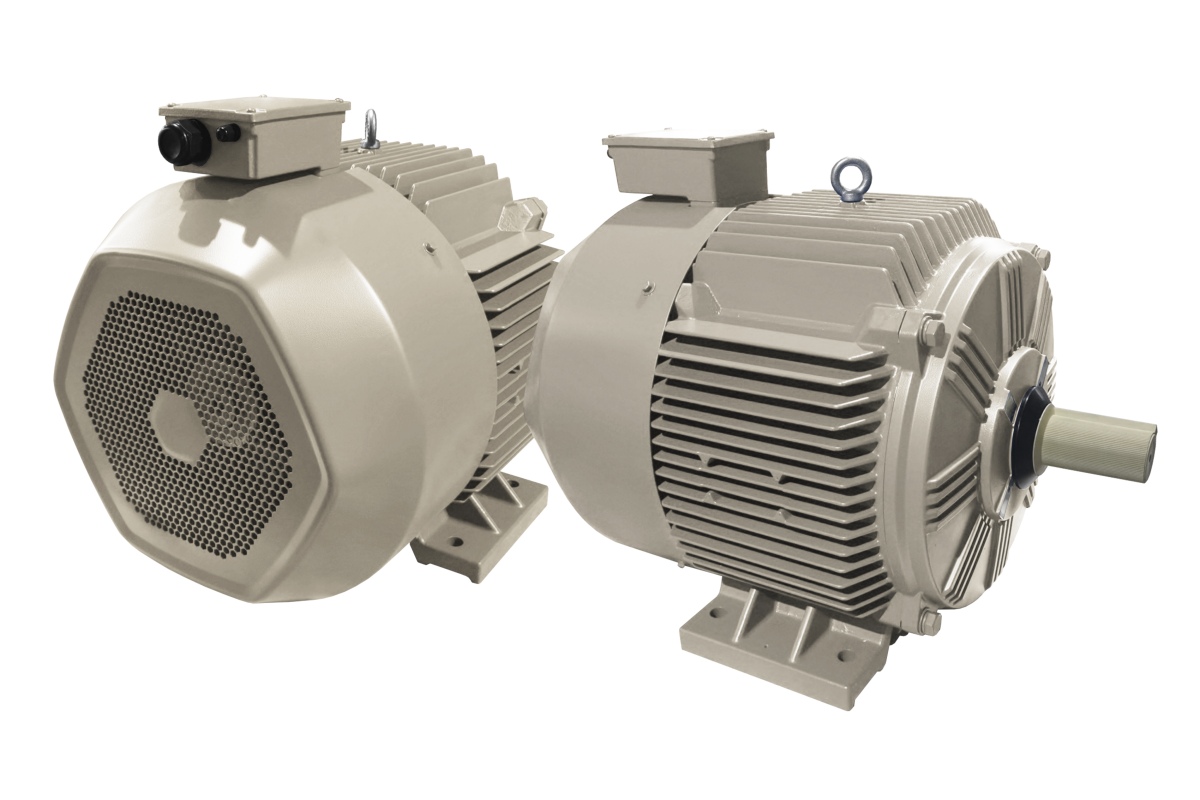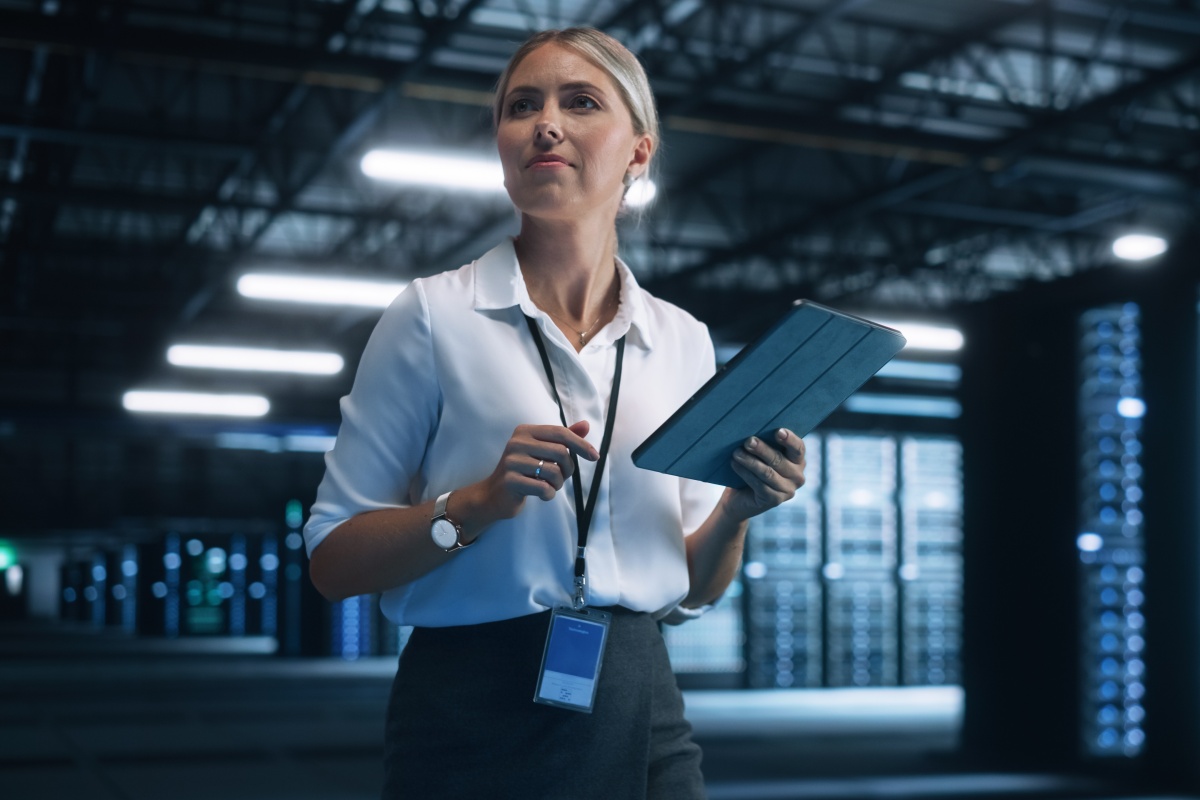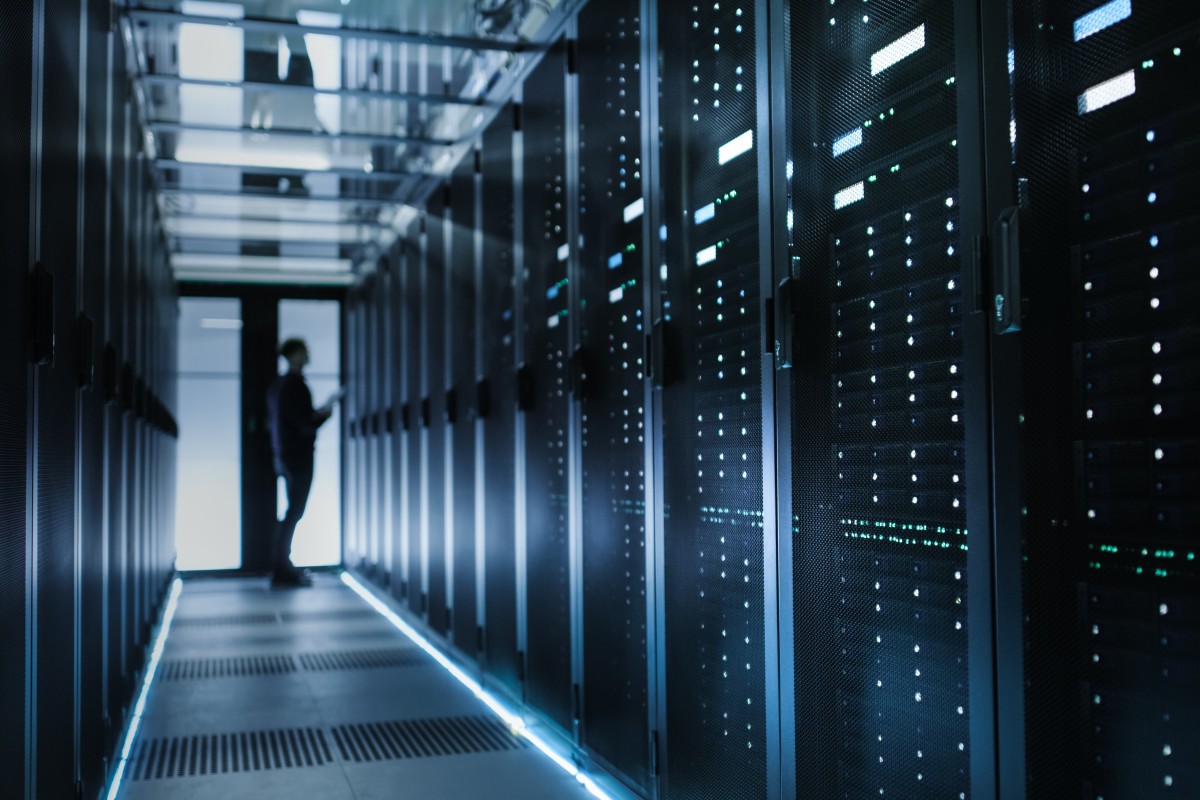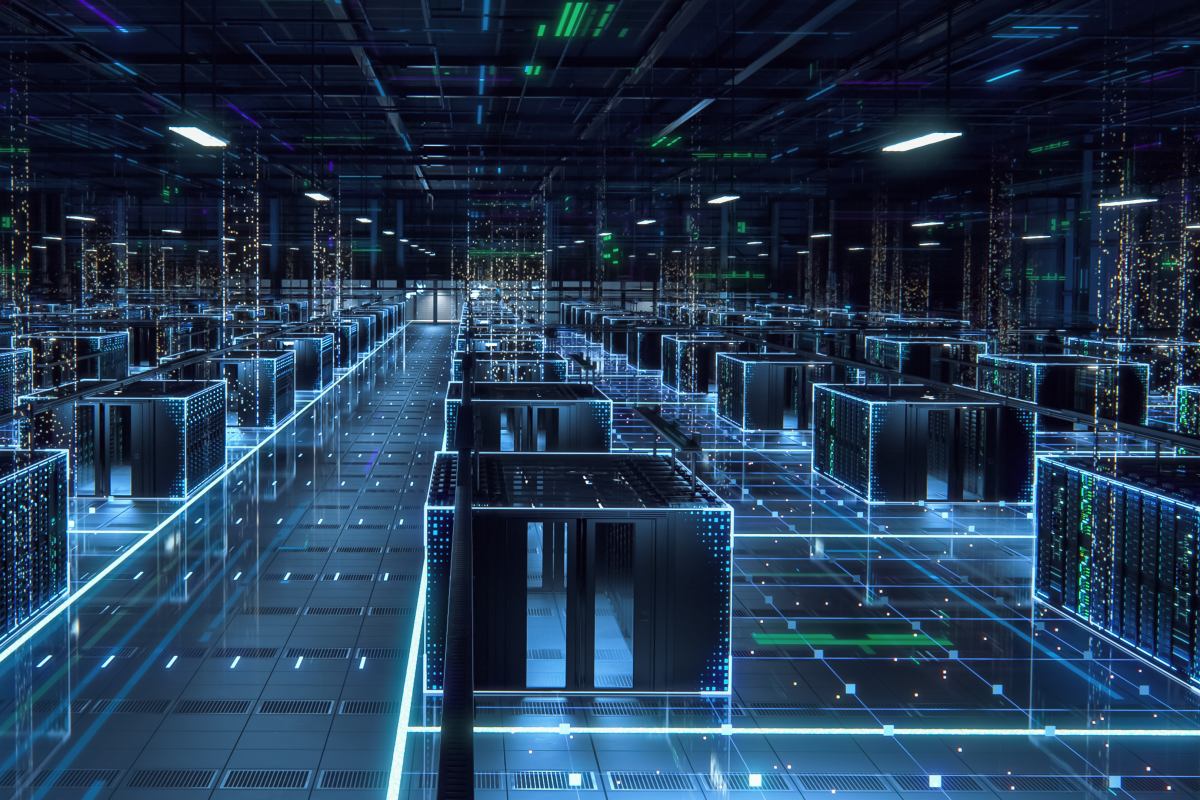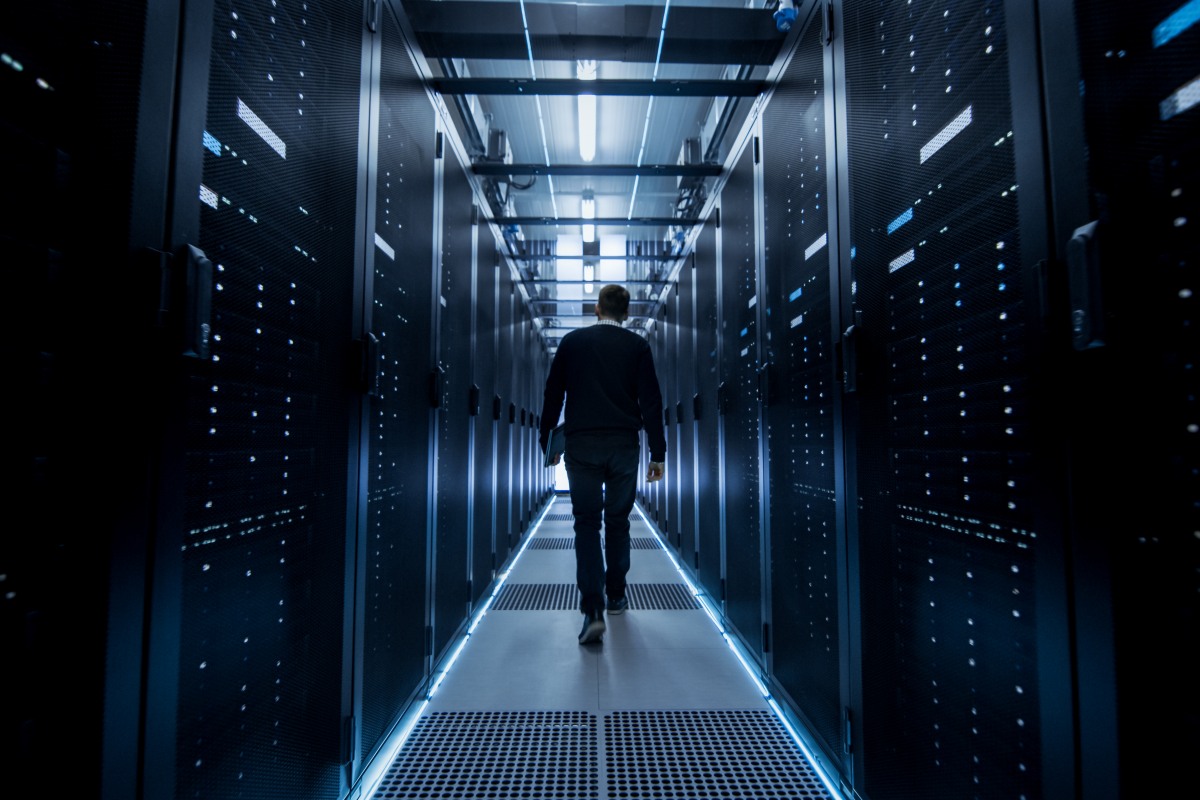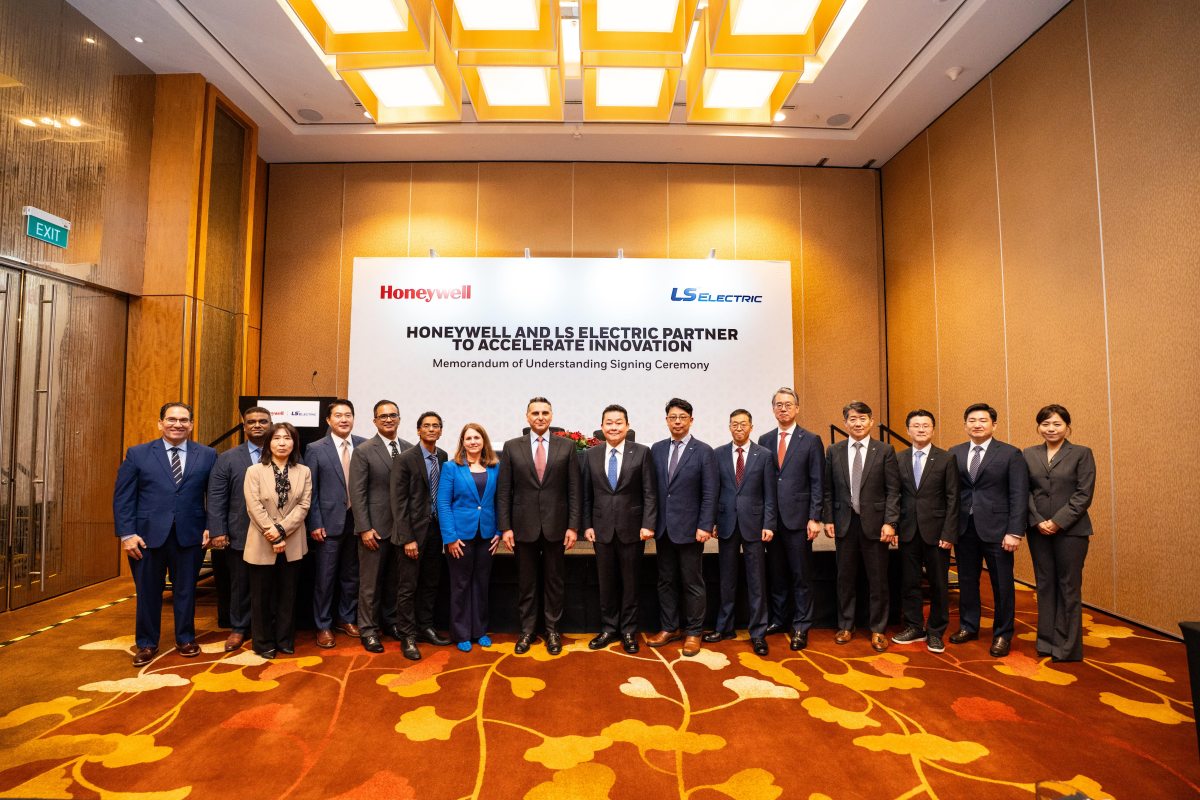Innovations in Data Center Power and Cooling Solutions
Data Centre Infrastructure News & Trends
Innovations in Data Center Power and Cooling Solutions
News
Products
ZincFive introduces battery system designed for AI DCs
ZincFive, a producer of nickel-zinc (NiZn) battery-based solutions for immediate power applications, has announced a new nickel-zinc battery cabinet designed for data centres deploying artificial intelligence workloads.
The system, named BC AI, is positioned as an uninterruptible power supply (UPS) battery platform that can support both high-intensity AI power surges and conventional backup requirements.
The company says the new system builds on its existing nickel-zinc battery range and is engineered for environments where GPU clusters and rapid power fluctuations are driving changes in electrical infrastructure requirements.
The battery technology is intended to respond to fast transient loads associated with AI training and inference, while also providing backup during power interruptions.
The system includes a battery management platform and nickel-zinc chemistry designed for frequent high-power discharge cycles. The company says this approach reduces reliance on upstream electrical capacity by managing dynamic loads at the UPS level.
Nickel-zinc battery design for transient load handling
As well as incorporating a new nickel-zinc battery cell designed for high-intensity usage and long service life, ZincFive highlights the product's compact footprint and field-upgradeable design.
Nickel-zinc chemistry offers power density characteristics that allow the system to accommodate rapid load spikes without significant footprint expansion. ZincFive says competing approaches may require substantially more physical space to manage similar peak loads, particularly where AI applications can generate power demands above nominal UPS levels.
The system is targeted at hyperscale operators, colocation facilities, and UPS manufacturers integrating AI-ready backup capacity.
The company also points to potential benefits related to infrastructure design, including reduced UPS sizing requirements and support for power-management strategies aimed at improving grid interaction.
Tod Higinbotham, Chief Executive Officer of ZincFive, says, “AI is transforming the very foundation of data centres, creating new challenges that legacy technologies cannot solve.
"With BC 2 AI, we are delivering a safe, sustainable, and future-ready power solution designed to handle the most demanding AI workloads while continuing to support traditional IT backup.
"This is a defining moment not just for ZincFive, but for the entire data centre industry as it adapts to the AI era.”
For more from ZincFive, click here.
Joe Peck - 3 November 2025
Data Centre Infrastructure News & Trends
Events
Innovations in Data Center Power and Cooling Solutions
News
Danfoss to showcase DC technologies at SuperComputing 2025
Danfoss, a Danish manufacturer of mobile hydraulic systems and components, plans to present its data centre cooling and power management technologies at SuperComputing 2025, taking place 18–20 November in St Louis, Missouri, USA.
The company says it will demonstrate equipment designed to support reliability, energy performance, and liquid-cooling adoption in high-density computing environments.
Exhibits will include cooling components, liquid-cooling hardware, and motor-control equipment intended for use across data hall and plant-room applications.
Danfoss notes that increasing data centre efficiency while maintaining uptime remains a central challenge for operators and developers, particularly as AI and high-performance computing drive increases in heat output and power usage.
Peter Bleday, Vice President, Specialty Business Unit and Data Center at Danfoss Power Solutions, says, “Danfoss technologies are trusted by the world’s leading cloud service providers and chip manufacturers with products installed in facilities around the world.
"We look forward to welcoming visitors to our booth to discuss how we can help them achieve smarter, more reliable, and more sustainable data centre operations.”
Cooling and power management focus
Danfoss will present liquid-cooling components including couplings, hoses, and valve assemblies designed to support leak-tested coolant distribution for rack-level and direct-to-chip cooling.
A smart valve train system providing plug-and-play connection between piping and server racks will also be shown, designed to help optimise coolant flow and simplify installation.
The company's HVAC portfolio will also feature, including centrifugal compressor technology engineered for high efficiency and low noise in compact installations. Danfoss states that this equipment is designed to support data centre cooling requirements with long-term performance stability.
In addition, the manufacturer will highlight its power-conversion and motor-control portfolio, including variable-frequency drives and harmonic-mitigation equipment intended to support low-PUE facilities.
The business says its liquid-cooled power-conversion modules are designed to support applications such as energy storage and fuel-cell systems within data centre environments.
Danfoss representatives will also discuss the company’s involvement in wider sustainability initiatives, including the Net Zero Innovation Hub for Data Centers, where industry stakeholders such as Google and Microsoft collaborate on energy-efficiency and decarbonisation strategies.
For more from Danfoss, click here.
Joe Peck - 31 October 2025
Data Centre Infrastructure News & Trends
Innovations in Data Center Power and Cooling Solutions
Products
Wolong introduces efficient motors for DC cooling applications
Wolong Electric America, a developer of industrial motor and drive technology, has introduced its Permanent Magnet Direct Drive (PMDD) motors, highlighting their ability to improve energy efficiency and reduce heat generation in high-demand environments such as data centres.
Designed to operate without belts or sheaves, PMDD motors use a direct drive system that reduces mechanical complexity and common failure points, improving reliability and minimising maintenance requirements.
The approach should also reduce mechanical stress and radial load on bearings, contributing to a longer service life.
Lower heat output and energy use in data centres
At the core of each motor is a rare earth magnet design that delivers stronger magnetic fields in a compact form factor.
This aims to enable higher efficiency and cooler operation compared with traditional induction motors, which would be a key advantage in temperature-sensitive environments such as data centres, where controlling internal heat and power consumption are constant priorities.
The motors are operated via a variable frequency drive (VFD), enabling precise speed control, smooth acceleration and deceleration, and reduced electrical strain on supporting systems.
A 4:1 turndown ratio allows the motors to maintain torque and efficiency - including at low speeds - supporting variable airflow demands within cooling systems.
Wolong Electric says its PMDD motors can be integrated directly into fan assemblies, reducing overall system losses and eliminating inrush current at startup.
With reported efficiency improvements of around 20% over conventional induction motors, the design should contribute to measurable reductions in both energy use and waste heat.
Flexible configurations for critical environments
Wolong Electric says the PMDD motors can be tailored to specific applications, including data centre cooling systems, refineries, and OEM equipment such as heat exchangers.
The motors are designed to operate at lower temperatures and with reduced maintenance demands, supporting long-term reliability and stable thermal management across facility operations.
The company’s design approach hopes to enable easy integration with OEM and packaged system configurations, helping operators meet efficiency goals while aligning with evolving energy standards.
Joe Peck - 29 October 2025
Data Centre Infrastructure News & Trends
Innovations in Data Center Power and Cooling Solutions
Sponsored
AI is reshaping data centres - are you ready?
As AI workloads surge, data centres face unprecedented challenges in power quality, grid stability, and sustainability. Hitachi Energy is leading the charge with advanced HVDC and grid integration solutions designed to meet the evolving demands of hyperscale and colocation facilities.
The company's solutions empower operators to maintain uptime, reduce environmental impact, and comply with global grid codes, while transforming data centres into versatile energy contributors.
From battery energy storage systems (BESS) to hydrogen generators and microgrids, Hitachi Energy helps you balance erratic AI loads and ensure seamless grid reconnection.
With standardised, scalable designs and deep consulting expertise, the company tailors infrastructure to your unique needs - delivering performance, reliability, and sustainability at scale.
Data centres must evolve to stay resilient. Discover how to adapt to the future of data centre infrastructure by reading the full article here.
For more from Hitachi, click here.
Joe Peck - 29 October 2025
Data Centre Infrastructure News & Trends
Innovations in Data Center Power and Cooling Solutions
Liquid Cooling Technologies Driving Data Centre Efficiency
Salute introduces DTC liquid cooling operations service
Salute, a US provider of data centre lifecycle services, has announced what it describes as the data centre industry’s first dedicated service for direct-to-chip (DTC) liquid cooling operations, launched at NVIDIA GTC in Washington DC, USA.
The service is aimed at supporting the growing number of data centres built for artificial intelligence (AI) and high-performance computing (HPC) workloads.
Several data centre operators, including Applied Digital, Compass Datacenters, and SDC, have adopted Salute’s operational model for DTC liquid cooling across new and existing sites.
Managing operational risks in high-density environments
AI and HPC facilities operate at power densities considerably higher than those of traditional enterprise or cloud environments. In these facilities, heat must be managed directly at the chip level using liquid cooling technologies.
Interruptions to coolant flow or system leaks can result in temperature fluctuations, equipment damage, or safety risks due to the proximity of electrical systems and liquids.
Erich Sanchack, Chief Executive Officer at Salute, says, “Salute has achieved a long list of industry firsts that have made us an indispensable partner for 80% of companies in the data centre industry.
"This first-of-its-kind DTC liquid cooling service is a major new milestone for our industry that solves complex operational challenges for every company making major investments in AI/HPC.”
Salute’s service aims to help operators establish and manage DTC liquid cooling systems safely and efficiently. It includes:
• Design and operational assessments to create tailored operational models for each facility
• Commissioning support to ensure systems are optimised for AI and HPC operations
• Access to a continuously updated library of best practices developed through collaborations with NVIDIA, CDU manufacturers, chemical suppliers, and other industry participants
• Operational documentation, including procedures for chemistry management, leak prevention, safety, and CDU oversight
• Training programmes for data centre staff through classroom, online, and lab-based sessions
• Optional operational support to help operators scale teams in line with AI and HPC demand
Industry comments
John Shultz, Chief Product Officer AI and Learning Officer for Salute, argues, “This service has already proven to be a game changer for the many data centre service providers who partnered with us as early adopters. By successfully mitigating the risks of DTC liquid cooling, Salute is enabling these companies to rapidly expand their AI/HPC operations to meet customer demand.
"These companies will rely on this service from Salute to support an estimated 260 MW of data centre capacity in the coming months and will expand that to an estimated 3,300 MW of additional data centre capacity by the end of 2027. This is an enormous validation of the impact of our service on their ability to scale. Now, other companies can benefit from this service to protect their investments in AI.”
Laura Laltrello, COO of Operations at Applied Digital, notes, “High-density environments that utilise liquid cooling require an entirely new operational model, which is why we partnered with Salute to implement operational methodologies customised for our facilities and our customers’ needs.”
Walter Wang, Founder at SDC, adds, "Salute is making it possible for SDC’s customers to accelerate AI deployments with zero downtime, thanks to the proven operational model, real-world training, and other best practices."
Joe Peck - 28 October 2025
Data Centre Infrastructure News & Trends
Innovations in Data Center Power and Cooling Solutions
News
Aligned, Calibrant to deploy on-site battery storage
Aligned Data Centers (Aligned), a technology infrastructure company, and Calibrant Energy (Calibrant), a US provider of on-site energy systems, have announced a new energy solution to address an urgent constraint to the data centre industry: access to grid power.
The announcement comes as the rapid growth of AI and advanced computing fuels unprecedented power demand, accelerating the need to increase load service and ensure reliable access to grid power.
Under the agreement, Calibrant will deliver a 31MW / 62MWh battery energy storage system (BESS) at Aligned’s data centre campus in the Pacific Northwest.
The on-site system, planned to be operational in 2026, will enable the facility to come online and scale operations years earlier than would be possible with traditional utility upgrades.
Calibrant and Aligned have been partnering with a regional utility in the Pacific Northwest since the start of negotiations to explore flexibility as a means to increase and accelerate interconnection.
Phil Martin, CEO at Calibrant, says, “This project flips the script on how data centres access power.
“Rather than the false choice between waiting years for system upgrades or having to go off grid entirely, we're working with leading data centre providers like Aligned to use distributed energy solutions to facilitate and accelerate grid interconnection.
“This innovative model allows large power users to take control of their energy future while being stewards of their community - ensuring growth objectives are met in a manner that supports grid reliability, has minimal environmental impact, and doesn't burden others with the costs."
A US first
This will be the first time in the US that a battery system is purpose-built to accelerate interconnection and bring a large-scale data centre online.
Developed using Calibrant’s 'Path to Power' solution - a replicable, scalable approach that leverages on-site energy to overcome siting and capacity bottlenecks - the system functions as a grid-responsive asset, designed to discharge during peak demand, bolster grid reliability, and ensure uninterrupted service.
Calibrant and Aligned say they prioritised safety and the use of domestically manufactured components for this project, sourcing from suppliers that maintain US-based manufacturing and supply chains.
The battery system meets international safety standards by incorporating multiple layers of protection, including safer battery chemistry, built-in fire mitigation measures, and remote 24/7 monitoring.
Key equipment, including transformers, switchgear, and batteries, were all manufactured and/or assembled in the United States.
Andrew Schaap, CEO at Aligned, comments, “This strategic project redefines how we grow in power-constrained markets.
"With this BESS, we’re converting our load from a potential grid liability into a dynamic grid asset, providing the regional utility with the tools needed to accelerate our ramp, and we’re doing it responsibly, without impacting ratepayers.
“We're proud to partner with Calibrant on a new market-defining initiative, directly addressing the industry's critical constraint of access to grid power. Their experience in serving large power users and critical facilities was instrumental in our ability to move quickly and efficiently.”
Calibrant and Aligned confirmed they are considering similar projects in other markets, signalling a repeatable approach for data centre operators facing interconnection challenges.
For more from Aligned, click here.
Joe Peck - 27 October 2025
Data Centre Infrastructure News & Trends
Exclusive
Innovations in Data Center Power and Cooling Solutions
Why resilient cooling systems are critical to reliability
In this exclusive article for DCNN, Dean Oliver, Area Sales Manager Commercial (South and London areas) at Spirotech, explores why uninterrupted operation of data centres - 24 hours a day, 365 days a year - is no longer optional, but essential. To achieve this, he believes robust backup systems, advanced infrastructure, and precision cooling are fundamental:
The importance of data
In today's digitally driven economy, data is the backbone of intelligent business decisions. From individuals and startups to multinational corporations and financial institutions, the protection of personal and commercial information is more vital than ever.
The internet sparked a technological revolution that has continued to accelerate - ushering in innovations like cryptocurrencies and, more recently, the powerful rise of artificial intelligence (AI). While these developments are groundbreaking, they also highlight the need for caution and infrastructure readiness.
For most users, the importance of data centres only becomes clear when systems fail. A 30-minute outage can bring parts of the economy to a halt. If banks can’t process transactions, the consequences are immediate and widespread.
Data breaches can have a significant impact on businesses, both operationally and financially. This year alone, several high-profile companies have been targeted. Marks & Spencer, for example, reportedly suffered losses of around £300 million over a six-week period following a cyberattack.
These and other companies affected by such problems underline just how dependent our society is on digital infrastructure. Cyberattacks, like denial-of-service (DoS) assaults, are a real and growing threat.
But even without malicious intent, data centres must operate flawlessly, with zero downtime. Central to this is thermal management, including cooling systems that maintain optimal conditions to prevent system failure.
Why cooling is key
Data centres generate significant heat due to dense arrays of servers and network hardware. If temperatures are not precisely controlled, systems risk shutdown, data corruption, or permanent loss - an unacceptable risk for any organisation.
Cooling solutions are mission-critical. Given the security and performance demands on data centres, there’s no room for error. Cutting corners to save on cost can have catastrophic consequences.
That’s why careful planning at the design stage is essential. This should factor in redundancy for all key components: chillers, pumps, pressurisation units, and more. Communication links between these systems must also be integrated to ensure coordinated operation.
The equation is simple: the more computing power you deploy, the greater the cooling demand. Cloud infrastructure consumes enormous amounts of energy and space, requiring 10s of megawatts of power and covering thousands of square metres.
If the cooling system fails - whether from chiller malfunction or control breakdown - data loss on a massive scale becomes a very real possibility.
That’s why backup systems must be immediately responsive, guaranteeing continued operation under any condition.
Keeping systems operating
Today, there are innovative control systems available, like those offered by Spirotech, that offer detailed insights into system performance and which capture operational data from pumps, valves, pressurisation units, and vacuum degassers. This enables early detection of potential issues and provides trend analysis to support proactive maintenance.
For example, vacuum degassers can show how much air has been removed over time, while pressurisation units monitor pressure levels, leak events, and top-up activity. These systems work in tandem, ensuring balance and continuity. If a fault occurs, alerts are instantly dispatched to relevant personnel.
A poorly designed or maintained pressurisation system can result in negative pressure, leading to air ingress via vents and seals - or, conversely, excessive pressure that causes water discharge and frequent refills.
Air and dirt separators are also crucial to system health, preventing build-up and ensuring smooth operation across all pipework and components.
Conclusion
Effective cooling is essential for data centre systems due to the high demands on security and performance; there's no tolerance for failure. Inadequate or poorly designed cooling can lead to disastrous outcomes, including potential large-scale data loss.
To prevent this, detailed planning during the design phase is crucial. This includes building in redundancy for all major components like chillers, pumps, and pressure units, and ensuring these systems can communicate and function together reliably.
As computing capacity increases, so does the need for robust cooling. Modern cloud infrastructure uses vast amounts of power and physical space, placing even greater stress on cooling requirements.
Therefore, backup systems must be fast-acting and fully capable of maintaining continuous operation to avoid downtime and protect data integrity, regardless of any component failures.
For more from Spirotech, click here.
Joe Peck - 16 October 2025
Data Centre Infrastructure News & Trends
Innovations in Data Center Power and Cooling Solutions
News
Schneider Electric advances 800 VDC power systems
Schneider Electric, a French multinational specialising in energy management and industrial automation, has outlined its latest developments in 800 VDC power architectures, designed to meet the growing demands of high-density rack systems across next-generation data centres.
The company says the move reflects a broader industry transition towards higher power densities and greater efficiency, as artificial intelligence (AI) workloads drive increased compute intensity.
Schneider Electric is developing its approach around system-level design, integrating power conversion, protection, and metering to ensure performance, scalability, and safety.
Jim Simonelli, Chief Technology Officer for Data Centres at Schneider Electric, explains, “The move to 800 VDC is a natural evolution as compute density increases and Schneider Electric is committed to helping customers make that transition safely and reliably.
"Our expertise lies in understanding the full power ecosystem, from grid to server, and designing systems that integrate seamlessly and operate predictably.”
Collaboration with NVIDIA on 800 VDC sidecar
Schneider Electric is working with NVIDIA to develop an 800 VDC sidecar capable of powering racks of up to 1.2 MW.
The sidecar is designed to support future generations of NVIDIA GPUs and accelerated computing infrastructure by converting AC power from the data centre into 800 VDC.
According to Schneider Electric, the design enables safe and efficient megawatt-scale rack power delivery while helping to minimise infrastructure and material costs. The sidecar includes:
• Modular power conversion shelves• Integrated short-term energy storage for load smoothing and backup• Live Swap capability for safer maintenance• High energy efficiency
The company says the development reflects its wider 'system-level' approach, which focuses on the complete power infrastructure rather than isolated components.
This includes optimising conversion technology, intelligent metering, and integrated protection systems to improve operational efficiency and support scalable, high-density deployments.
Safety, reliability, and validation
Schneider Electric reports that its 800 VDC power systems are backed by extensive modelling, simulation, and testing. This includes fault current and arc flash analysis, as well as certified laboratory environments designed to replicate real-world conditions.
The company’s safety and validation processes are aimed at ensuring predictable performance, simplified maintenance, and operational resilience, which are all key factors for facilities deploying high-density AI and high-performance computing racks.
Dion Harris, Senior Director of HPC, Cloud, and AI Infrastructure Solutions GTM at NVIDIA, says, “Scalable power architectures are the foundation for next-generation AI infrastructure that maximises both performance and efficiency.
"NVIDIA and Schneider Electric are building on our longstanding partnership to design and deliver advanced 800 VDC power systems that will support AI applications driving the industrial AI revolution.”
For more from Schneider Electric, click here.
Joe Peck - 14 October 2025
Data Centre Infrastructure News & Trends
Data Centre Security: Protecting Infrastructure from Physical and Cyber Threats
Innovations in Data Center Power and Cooling Solutions
Security Risk Management for Data Centre Infrastructure
Sponsored
Uncover the hidden risks in data centre resilience
In July 2024, a lightning arrester failure in Northern Virginia, USA, triggered a massive 1,500MW load transfer across 70 data centres - handling over 70% of global internet traffic.
The result? No customer outages, but a cascade of grid instability and unexpected generator behaviour that exposed critical vulnerabilities in power resilience.
Powerside’s latest whitepaper - entitled Data Centre Load Transfer Event – Critical Insights from Power Quality Monitoring - delivers a technical case study from this unprecedented event, revealing:
• Why identical voltage disturbances led to vastly different data centre responses
• How power quality monitoring helped decode complex grid interactions
• What this means for future-proofing infrastructure in 'Data Centre Alley' and beyond
Whether you are managing mission-critical infrastructure or advising on grid stability, this is essential reading.
You can download the full whitepaper by registering below:
[ninja_form id=5]
Joe Peck - 13 October 2025
Data Centre Infrastructure News & Trends
Innovations in Data Center Power and Cooling Solutions
News
Honeywell, LS Electric deal to boost data centre power
Honeywell, a US multinational specialising in building automation, has announced a global partnership with LS Electric, a South Korean manufacturer of electrical equipment and automation systems, to develop and market integrated hardware and software systems for power management and distribution in data centres and commercial buildings.
The collaboration aims to simplify the integration of electrical and automation systems, improving operational efficiency, resilience, and energy management for operators of data-intensive and energy-critical facilities.
Integrated approach to power and automation
The partnership combines LS Electric’s experience in power infrastructure with Honeywell’s expertise in building automation and control systems.
Together, the companies plan to offer systems that unify power distribution and building management, ensuring load and capacity are balanced to maintain resilience and uptime.
The first joint products will include integrated switchgear and power management systems that help data centre operators control and distribute power more effectively.
Future development will focus on new electrical monitoring systems using the Honeywell Forge platform, enhanced with AI and analytics, and LS Electric’s software capabilities.
These systems will be designed to regulate energy distribution, improve efficiency, and provide predictive maintenance to reduce downtime and power quality issues.
Energy storage and grid resilience
Honeywell and LS Electric also plan to develop a grid- and building-aware battery energy storage system (BESS) for commercial and industrial buildings.
The modular BESS will integrate LS Electric’s energy storage technology with Honeywell’s dynamic energy control software, allowing users to forecast and optimise energy sourcing and costs based on grid data, weather conditions, and other variables.
The companies said the technology will help manage growing energy demand from sectors such as data centres, which currently account for between 1-2% of global electricity consumption.
Billal Hammoud, President and CEO of Honeywell Building Automation, comments, “Our collaboration with LS Electric supports our continued focus on delivering smarter, scalable solutions for the world’s most critical industries.
"As the global demand for data and energy accelerates, this partnership combines our complementary strengths to deliver intelligent infrastructure that’s both resilient and efficient.”
JongWoo Kim, President of LS Electric Power Electric, adds, “Building on our expertise in power infrastructure and energy storage systems, we are expanding globally into the data centre and industrial building markets.
"Through our collaboration with Honeywell, we will provide solutions that help large-scale operators achieve both energy efficiency and reliability.”
For more from Honeywell, click here.
Joe Peck - 9 October 2025

Head office & Accounts:
Suite 14, 6-8 Revenge Road, Lordswood
Kent ME5 8UD
T: +44 (0)1634 673163
F: +44 (0)1634 673173

